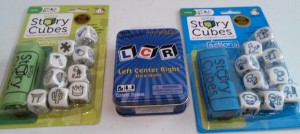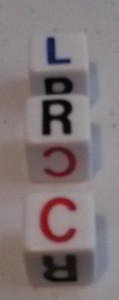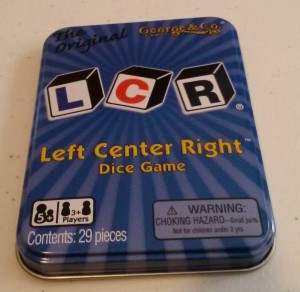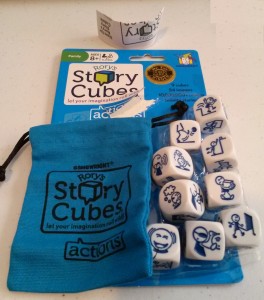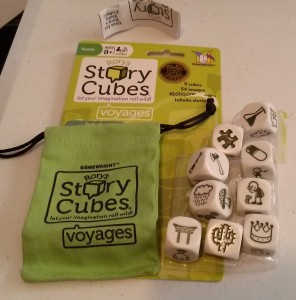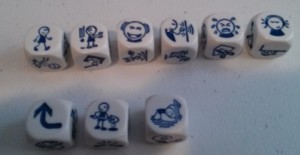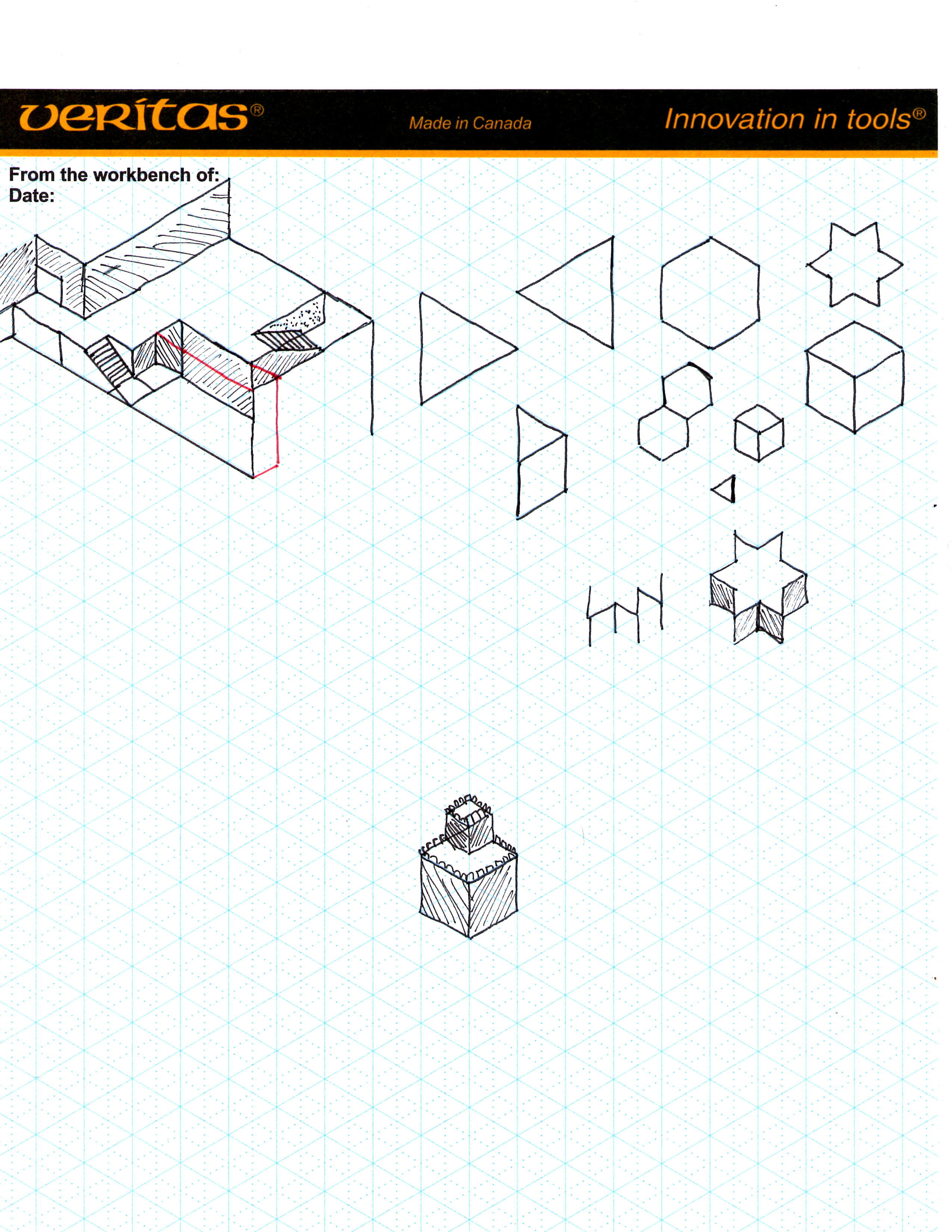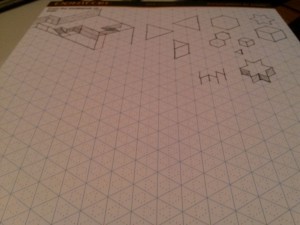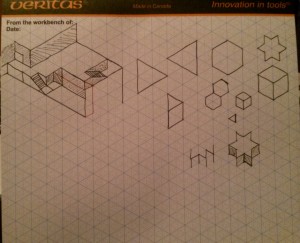I saw the story dice posts that made the rounds a week or so back, so I decided to jump on board. I found them at WalMart. They only had two sets, the blue actions and the green voyages. There are nine dice in each package. (Yes, I know, I just recently wrote about my last dice purchase saying I wasn’t going to buy any more dice…. It’s not that I have a problem, I just had to have them.)
I also just looked in that section and found some game in a tin called Left, Right, Center and had the impression that the dice were one of L, another or R, and another of C. I thought how cool that would be to determine which way a fleeing creature went, or which way a random street, tunnel, or dungeon passageway turned.
What I found when I got home is that each die had R, L, C in succession of sides and a dot on the other three sides, so each die was identical. I did not read the rules for this game, as I was planning to use the dice in a different way. I was a bit let down by what I found when I got home to open the tin.
However, as I thought about it, I had a few ideas. L, R, C can represent left, right, and center for anything. The dots can indicate no change, or a special feature, like a trap, scrawl on a wall, rug, hidden door, etc. One thought was to roll all three dice and let whatever the majority come up determine what it indicates. This could just as easily be decided by a d3 or d6/2, etc. Having a die with what you need on it is very interesting and speeds things up, since you don’t have to remember what the number means or look it up.
The story dice are interesting and can be mixed and matched. Since I have two sets with 18 total, I could roll a d20 for how many to use, and on a 19 or 20 add one or two other random dice. This could give all kinds of ideas. I rolled each of my sets and made a quick story about each one, to illustrate. I can see how they would be useful to get out of writer’s block.
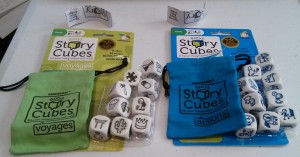
Actions:
I was out walking and something almost hit me. I saw this guy laughing and he went inside as I approached. I knocked on his door and he did not answer. Finally, he came to the door wearing headphones and acting like he didn’t hear me. That’s when our story took a drastic turn. As I was covering the body, I was caught, and now I’m locked up for good.
Voyages:

The king of the mountain was a real crab. His only joy in life came from drugs and funny mushrooms, but music was banned. After a plague I went on a quest for food and all I found were some beans.
Not necessarily the best stories, but it is easy to string them together and rearrange as needed to make things work.
Need a quick plot point or item – grab a random story die and roll it.
Faster than a table, because the dice ARE the table. That would take a lot of dice for every kind of table, but for specialist tables, this is like dungeonmorph or citymorph dice. Something to mix things up a bit. Relying solely on a table or a die role, can also make things a bit stilted and forced. One should be on guard to avoid having to have dice to generate a map, creature, situation, plot, etc. Be free to ignore a result or modify to make it work.


